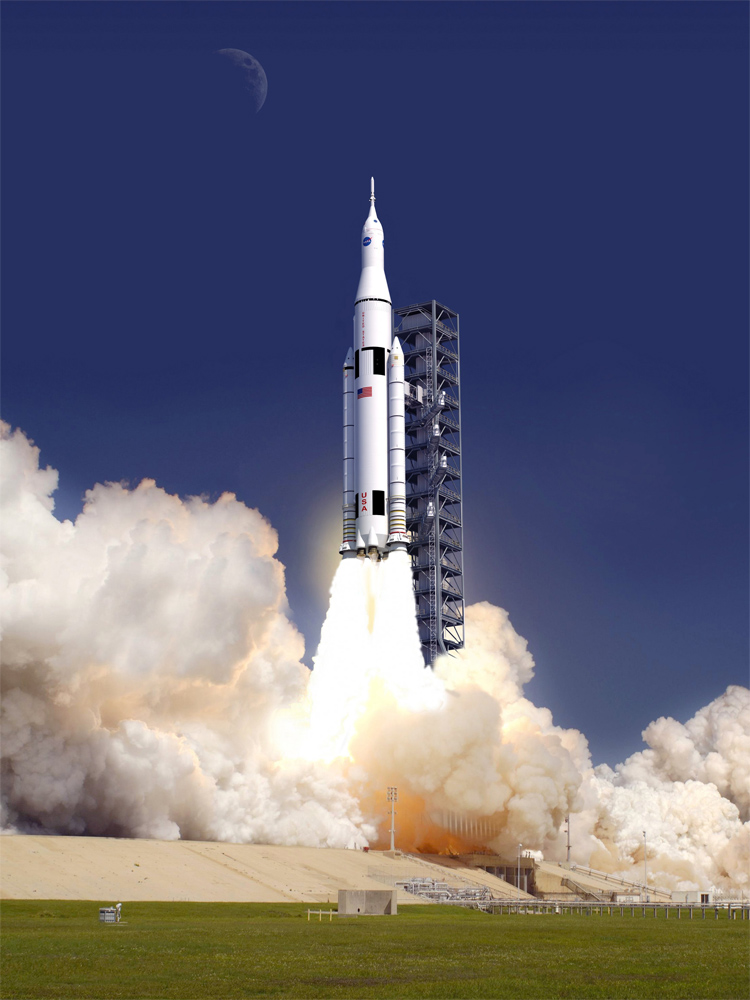The Space Launch System, or SLS, is a Shuttle-derived heavy launch vehicle designed by NASA, following the cancellation of the Constellation Program, to replace the Space Shuttle. The NASA Authorization Act of 2010 envisioned the transformation of the Ares I and Ares V vehicle designs into a single launch vehicle usable for both crew and cargo. It would be upgraded over time with more powerful versions.
The SLS will carry the Orion Multi-Purpose Crew Vehicle, as well as important cargo, equipment and experiments to Earth's orbit and destinations beyond. Additionally, it will serve as a backup for commercial and international partner transportation services to the International Space Station. It could also be used on missions to repair high-value telecom satellites, at orbits 36,000km above the Earth which were previously inaccessible to astronauts.*
The rocket design incorporates technology from the Space Shuttle and Constellation Programs - taking advantage of proven hardware and cutting-edge tooling and manufacturing
technology that greatly reduces development and operations costs. It is powered by a liquid hydrogen and liquid oxygen propulsion system, including the RS-25D/E from the Space Shuttle Program for the core stage and the J-2X engine for the upper stage.*
It has an initial lift capacity of 70 metric tons - nearly three times that of the Space Shuttle. The first unmanned developmental test flight takes place in 2017, with a manned trip around the Moon scheduled for 2021. Its payload will evolve as more advanced versions are developed; it is ultimately hoped to reach 130 tons in the early 2030s.** This will enable the first manned missions to Mars.**


No comments:
Post a Comment